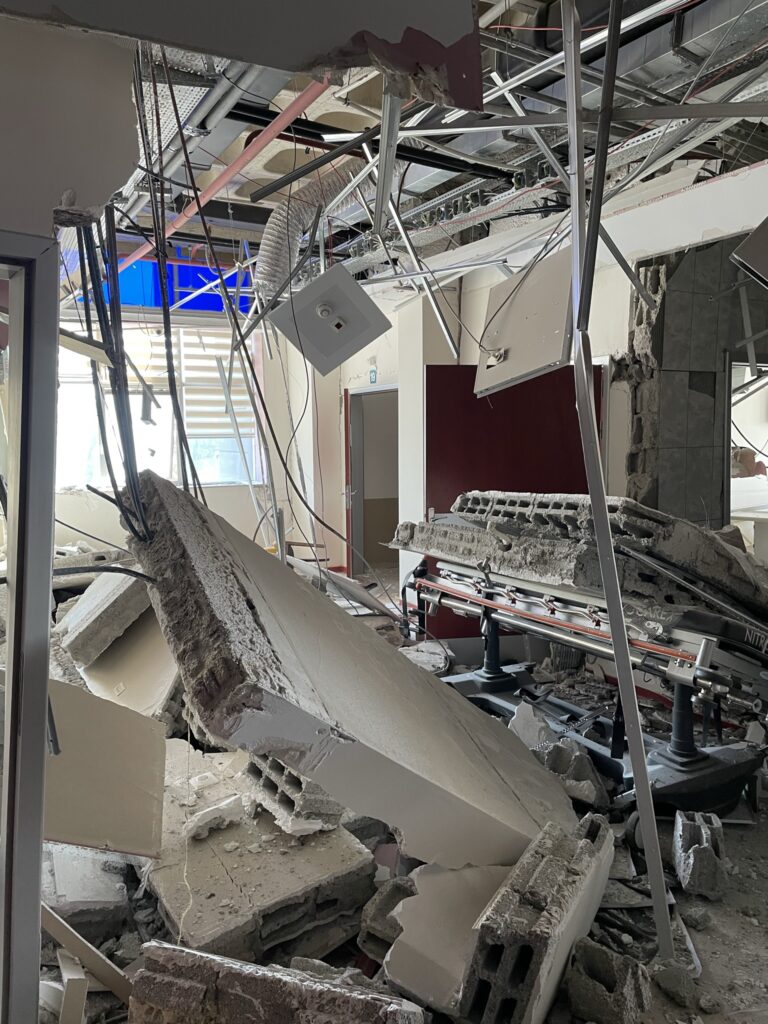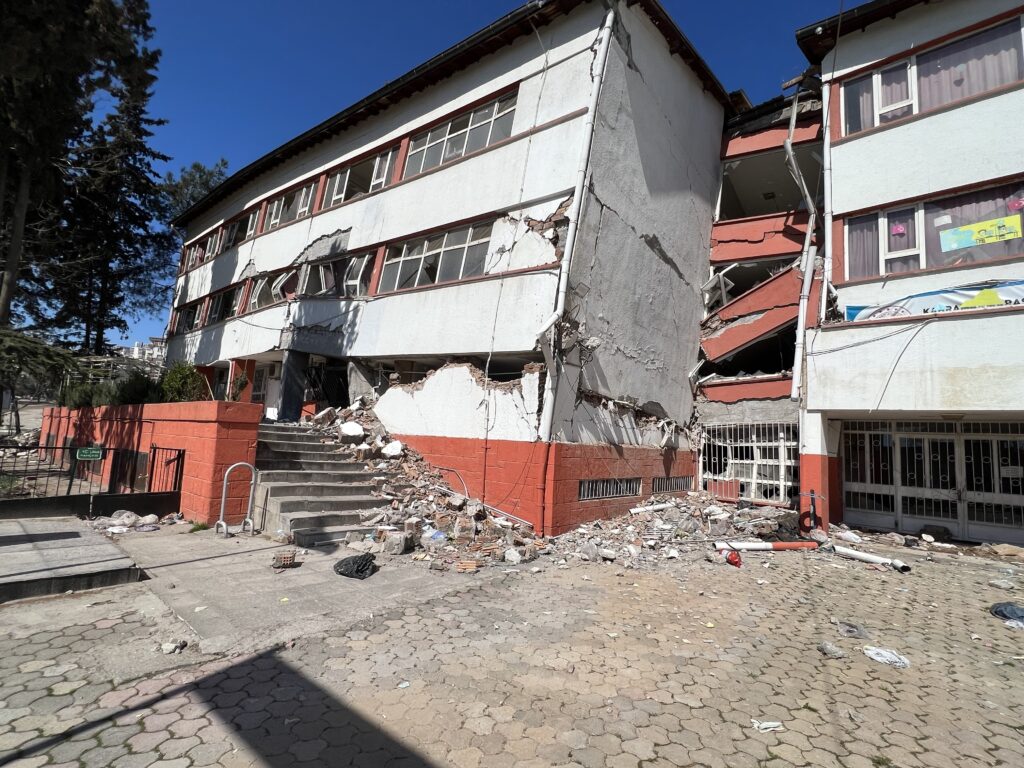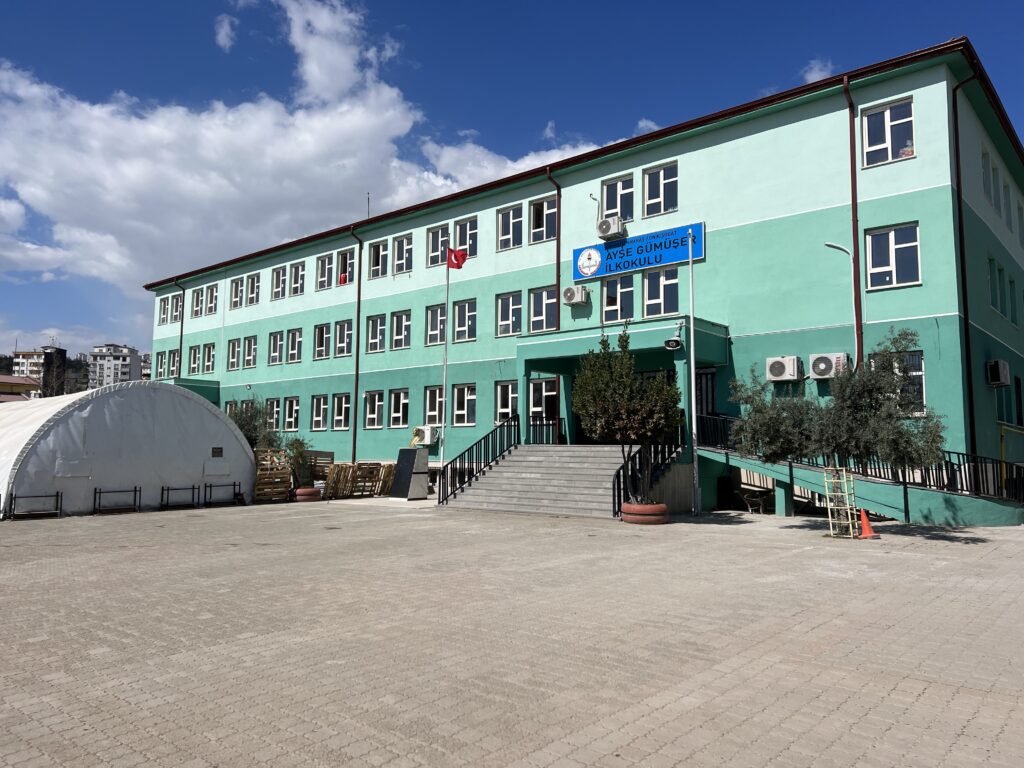Examining Schools and Hospitals in Turkoglu and Kahramanmaraş, Turkey
March 9, 2023 – Day 4, Team 2
This morning started with a high level of excitement as we knew that we were heading to Kahramanmaraş, a city for which the earthquake sequence takes its namesake, that had been heavily impacted by the earthquake. Team 1 had already gone to Maras (short for Kahramanmaraş) but had recommended that Team 2 make a visit due to the extensive damage. Rafael was informed en route by a friend of a heavily damaged private hospital outside the village of Turkoglu. When we arrived, the hospital was boarded up and the interior was completely deserted. The team found a way into the building and was quickly sobered by a building that experienced very little structural damage but a level of nonstructural damage that could not be imagined. The interior was in complete disarray; all ceilings and masonry partition walls were heavily damaged and covering the floors. Most rooms were impassable. The visit further reinforces the importance of nonstructural performance as a component of overall building performance, especially for hospitals where functional recovery is of paramount importance to a community that is impacted by a large natural disaster.

Extensive nonstructural damage within a private hospital near Turkoglu. Structurally, the building performed as well as any engineer could hope for, but nonstructural damage potentially injured occupants, blocked egress, and ultimately rendered the hospital inoperative.
The second stop was to observe the surface rupture of the earthquake. Just outside of town we were able to see a nearly nine-foot offset in the road. The slipped roadway clearly illuminates the severity of the rupture.

Surface rupture due to earthquake, which created a permanent nine-foot offset in the roadway.
Lastly, while in Maras, the team was able to witness the varying performance of two schools. The first was a four-story middle school just north of the downtown area, constructed of concrete frames with masonry infill. The building was heavily damaged and due to captive columns and the use of smooth rebar, it experienced a loss of the second floor. Due to the timing of the earthquake, it doesn’t appear that any lives were lost during the earthquake, but the building is not useable and will be scheduled for demolition. On the other hand, a few short blocks away, we witnessed the excellent performance of a recently retrofitted concrete shear wall elementary school. The school fortuitously completed the retrofit mere months before the earthquake struck and was now in the process of reopening. The building performed great and there weren’t any cracks to be seen anywhere. Proud of how their building performed, the school officials asked us to send their design back to America to be used in our schools. We agreed!

Severely damaged school that experienced a collapse of the second floor. Fortunately, the school was not in session when the earthquake struck.

Retrofitted school that performed well in the earthquake; there were no signs of structural or nonstructural damage. A poster child example of what a seismic retrofit can do for a building!